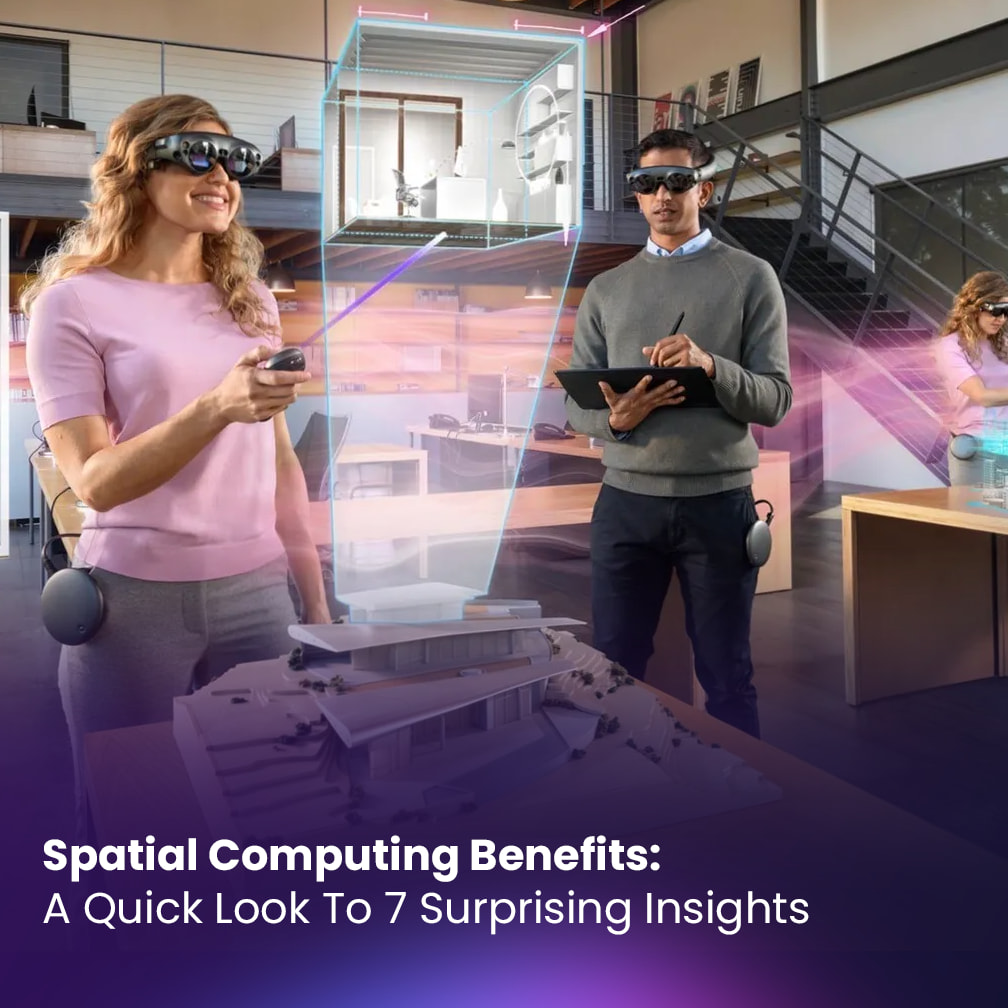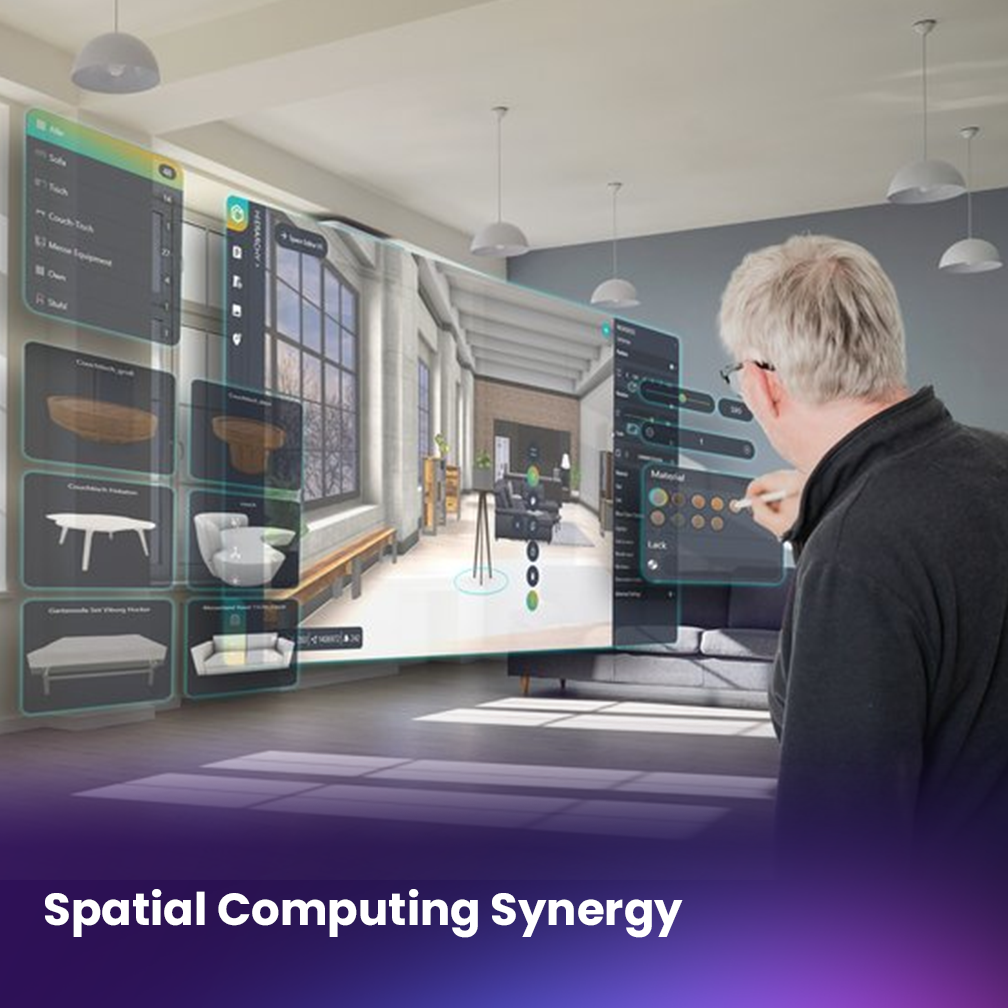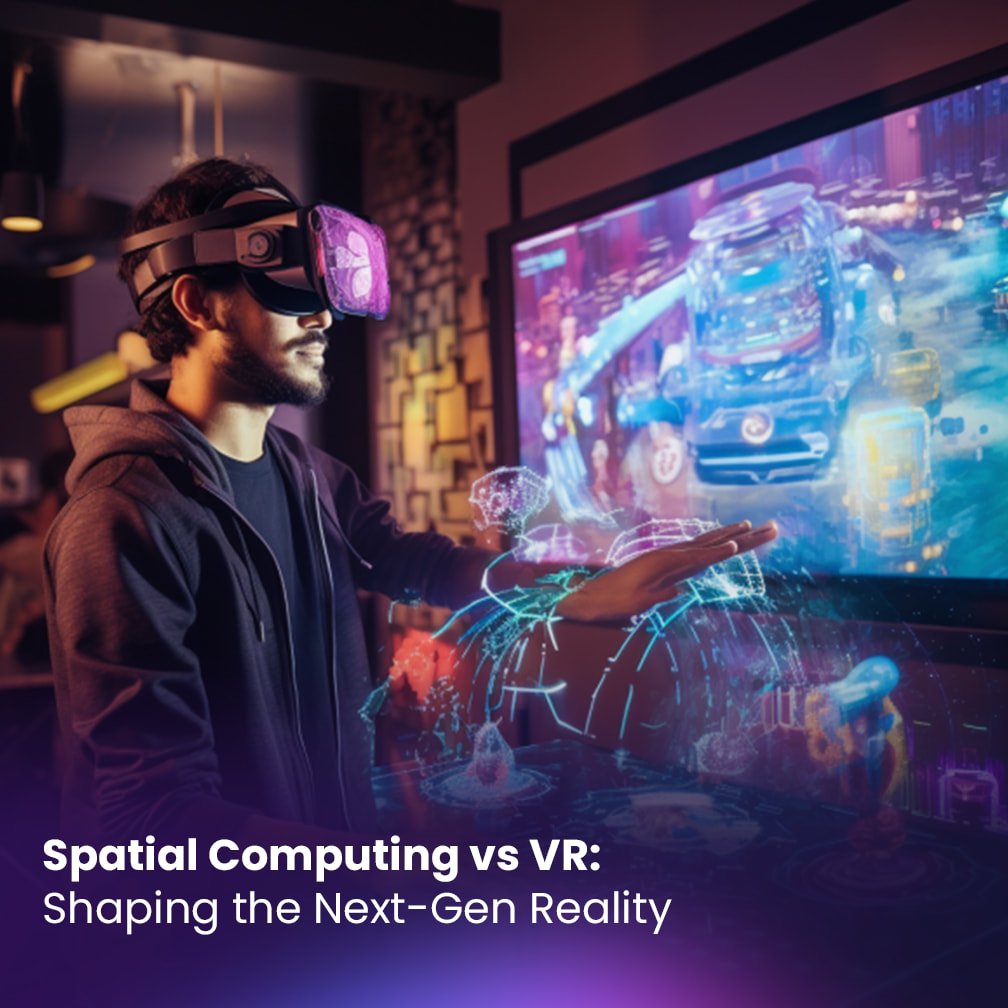Spatial Computing Benefits: A Quick Look To 7 Surprising Insights
- admin
- April 4, 2024
- 4 Comments

Estimated reading time: 4 minutes
Spatial computing is changing how we interact between the physical and digital worlds. This leading-edge technology blends realities to open up game-changing possibilities across many industries. Likewise, from improving healthcare to taking shopping experiences to new levels, spatial computing benefits driving innovation forward.
Let’s check out the incredible benefits that make brands and businesses want to dive into spatial computing fast.
Table of contents
- Enhancing Medical Care
- Boosting Online Shopping
- Advancing City Planning
- Accelerating Industrial Training
- Humanizing Remote Meetings
- Accessibility and Inclusivity
- Reinvent Storytelling
- FAQs
- How does spatial computing work?
- What skills are needed to work in spatial computing?
- What industries use spatial computing now?
- How does spatial computing improve educational experiences?
- Is spatial computing the future?
- Can spatial computing benefit businesses of all sizes?
- Is spatial computing limited to tech enthusiasts?
- Conclusion
Enhancing Medical Care
Spatial computing improves remote healthcare. Expanded testing, personalized treatment plans and immersive therapies lead to better results. This tech lets future doctors train on digital bodies instead of actual cadavers for more engaging education. It also enables complex surgery planning to increase access to quality medical care.
Boosting Online Shopping
Innovative brands use spatial computing to put shoppers into interactive digital stores. Virtual try-on for clothes, product demos and lifelike models engage users way beyond static images. Spatial computing gives brands useful data on preferences while also building customer loyalty through memorable experiences.
Advancing City Planning
Urban planners and architects apply spatial computing’s 3D simulations and digital twin capabilities for smarter development. Therefore, this tech allows modeling proposals with high accuracy to optimize navigation, sustainability and infrastructure requirements from the start. Spatial computing unlocks reimagining cities collaboratively.
Accelerating Industrial Training
Spatial computing lifts industrial skills training to new levels across manufacturing, construction, utilities and more. Immersive programs efficiently teach complex tasks without risks, while AI guides users through protocols. This tech gives dynamic feedback to workers to advance expertise. The result is greater workplace safety and higher productivity.
Humanizing Remote Meetings
Spatial computing brings vital visual information into remote conversations via realistic avatars, environments and spatial audio. Besides gathering with team members in a simulated conference room or walking through a virtual art gallery together encourages deeper connections. Because spatial computing gives distributed teams and long-distance loved ones the gift of communicating face-to-face.
Accessibility and Inclusivity
One of the remarkable facets of spatial computing is its potential to create inclusive environments. So, think of the joy on a child’s face when they can finally interact with a favorite storybook character in 3D, or the relief of a person with social anxiety finding a safe space to connect with others. This technology touches lives in profound ways.
Reinvent Storytelling
Spatial computing can also be used to reinvent storytelling. For example, interactive stories can allow users to participate in the narrative in a more meaningful way.
FAQs
How does spatial computing work?
Spatial computing combines technologies like augmented reality (AR), virtual reality (VR), mixed reality (MR), 360° media, additionally volumetric video and sensors to integrate digital elements into the real world.
What skills are needed to work in spatial computing?
Key skills include 3D modeling, VR/AR development, graphic design, software engineering, user experience (UX) design, user interface (UI) design, sound engineering and creativity. Collaboration across disciplines is also very important.
What industries use spatial computing now?
Major industries adopting spatial computing today include healthcare, engineering, architecture, defense, entertainment, education, manufacturing, marketing, real estate and more. Initially applications are extremely diverse.
How does spatial computing improve educational experiences?
Spatial computing enhances education by making learning interactive and engaging. Basically, it brings subjects to life through immersive experiences, enabling hands-on learning beyond traditional methods.
Is spatial computing the future?
Yes, spatial computing has an incredibly bright future! Market reports predict spatial computing will become an $8 billion industry by 2030. Indeed, there is incredibly high demand from surgical training to self-driving car testing and beyond.
Can spatial computing benefit businesses of all sizes?
Absolutely! Spatial computing offers diverse advantages, from enhancing customer experiences to optimizing workflows, catering to businesses regardless of their scale.
Is spatial computing limited to tech enthusiasts?
Not at all! Spatial computing platforms are designed for everyone, while providing user-friendly interfaces that allow individuals from various backgrounds to explore and utilize them effectively.
Conclusion
Embracing spatial computing lets forward-looking organizations unlock new efficiencies, capabilities and user engagement. Overall early adopters already see major spatial computing benefits, from stronger performance to new revenue streams. Spatial computing opens endless opportunities through blended realities. So, the future is here – will you step through the portal?
For more information and to dive deeper into the boundless possibilities of Stage Meta and TPA, soon visit Stage Meta’s Homepage. The future is now, and it awaits you.
Welcome to the new age of Spatial Computing. Welcome to Stage Meta.









4 Comments
[…] Spatial Computing Benefits: A Quick Look To 7 Surprising Insights […]
[…] Spatial Computing Benefits: A Quick Look To 7 Surprising Insights […]
[…] Spatial Computing Benefits: A Quick Look To 7 Surprising Insights […]
[…] Spatial Computing Benefits: A Quick Look To 7 Surprising Insights […]